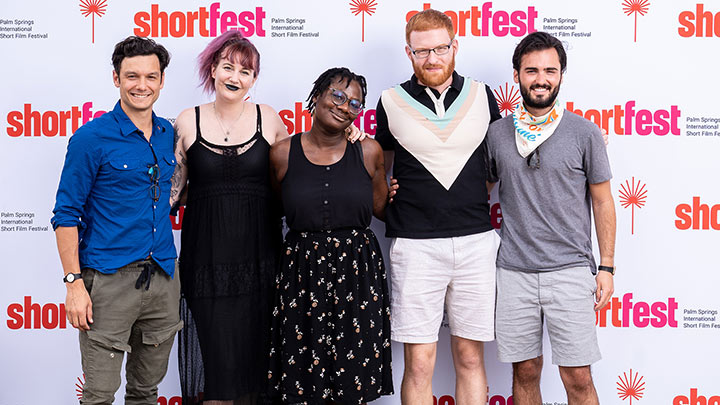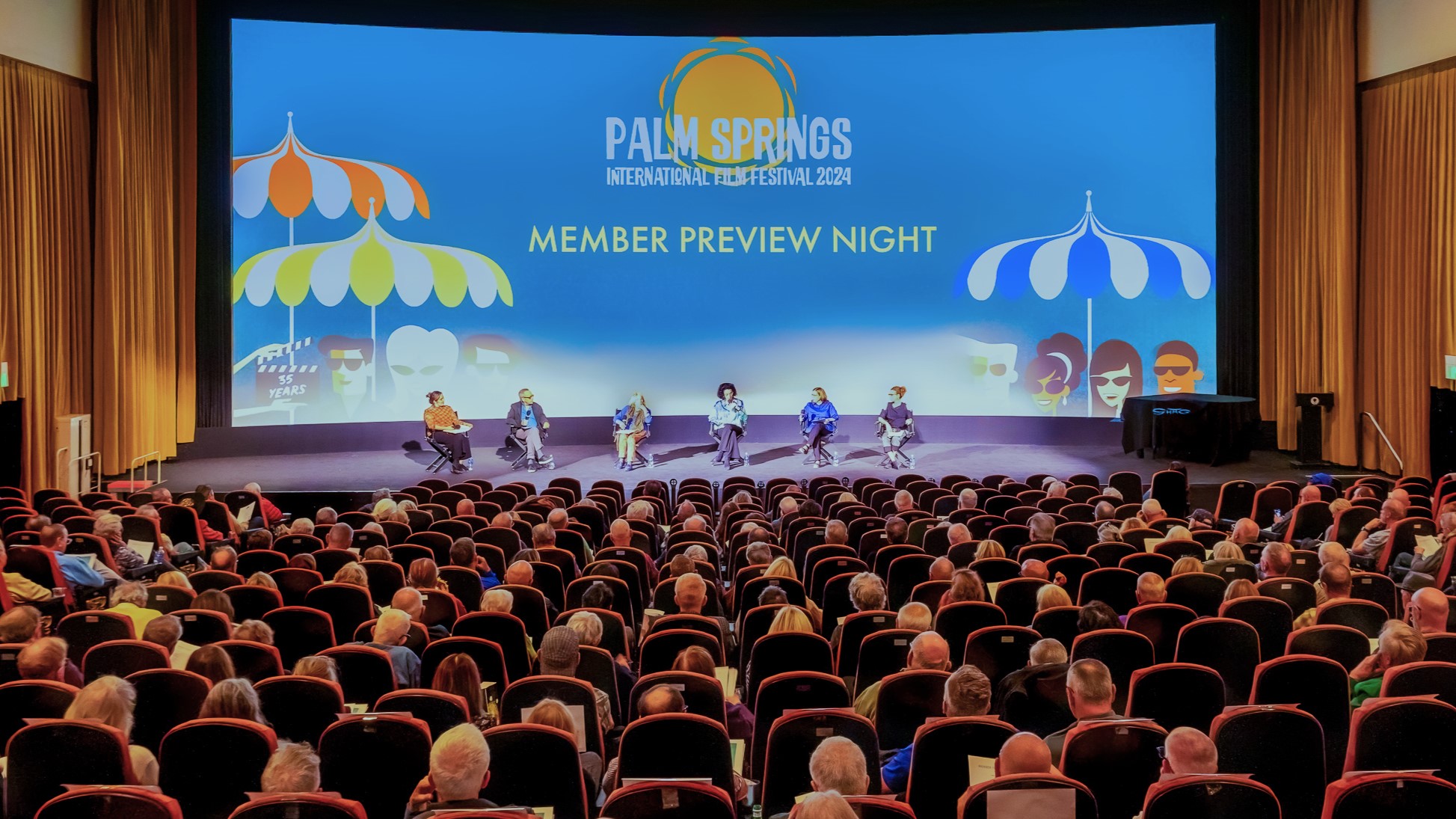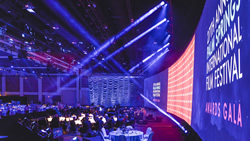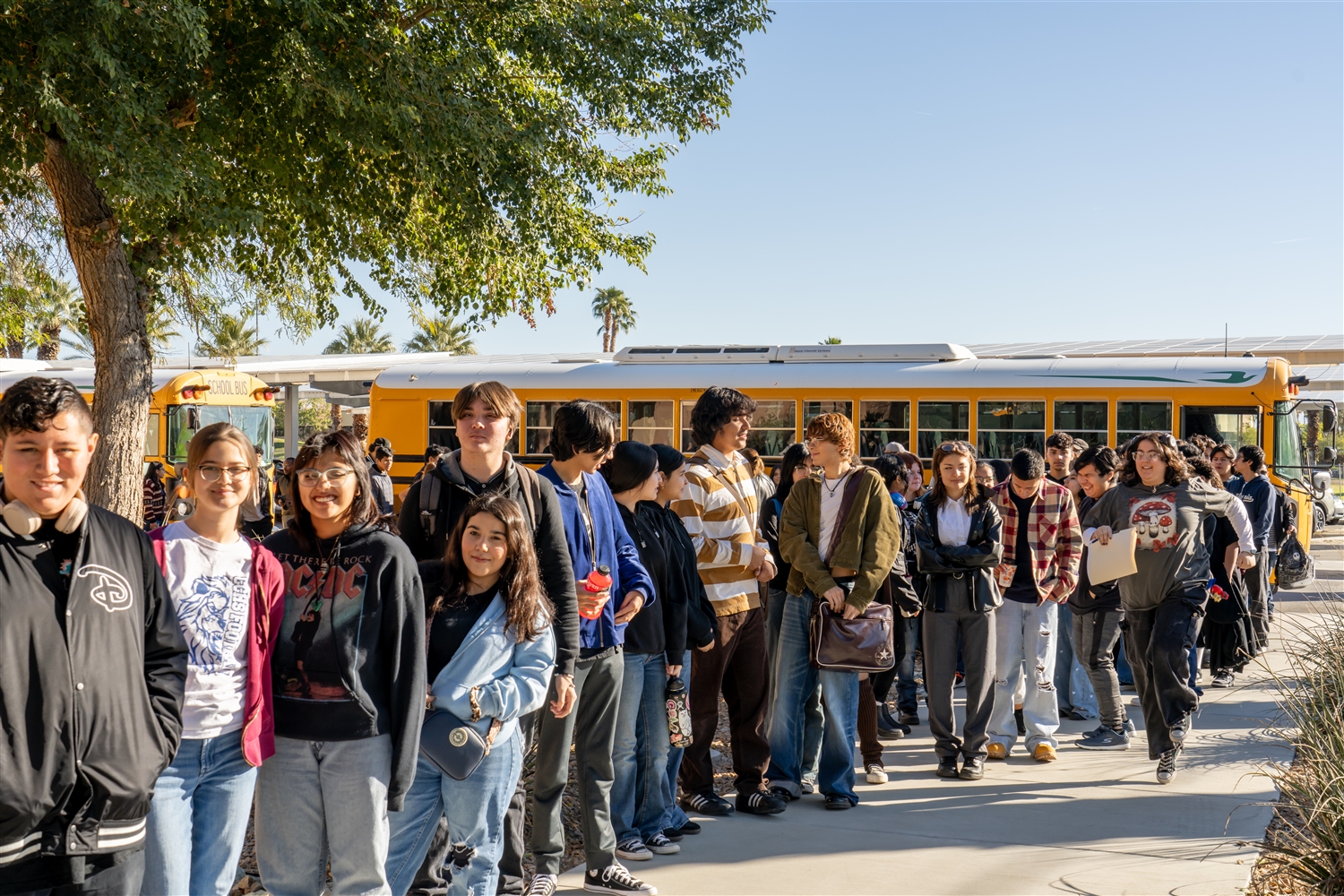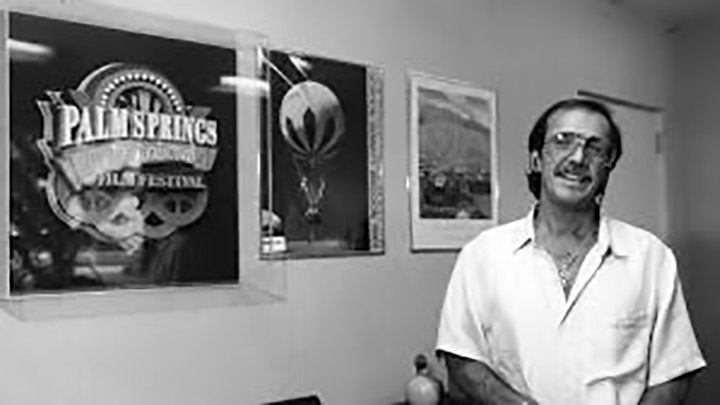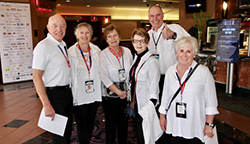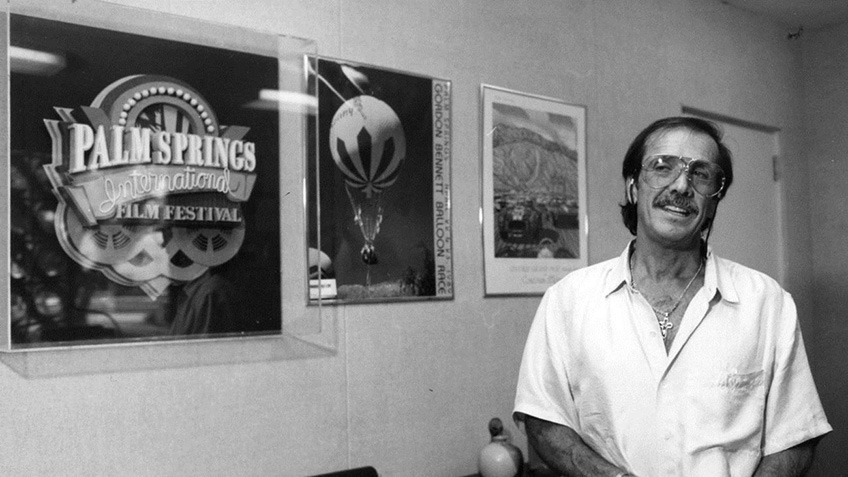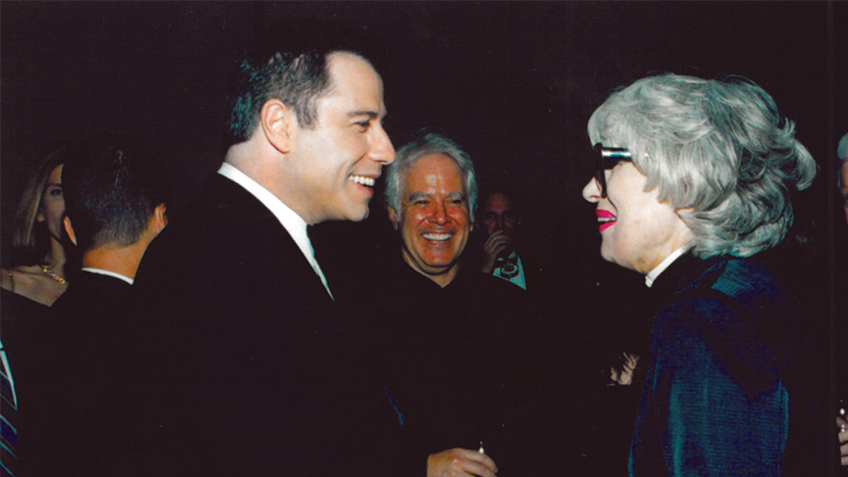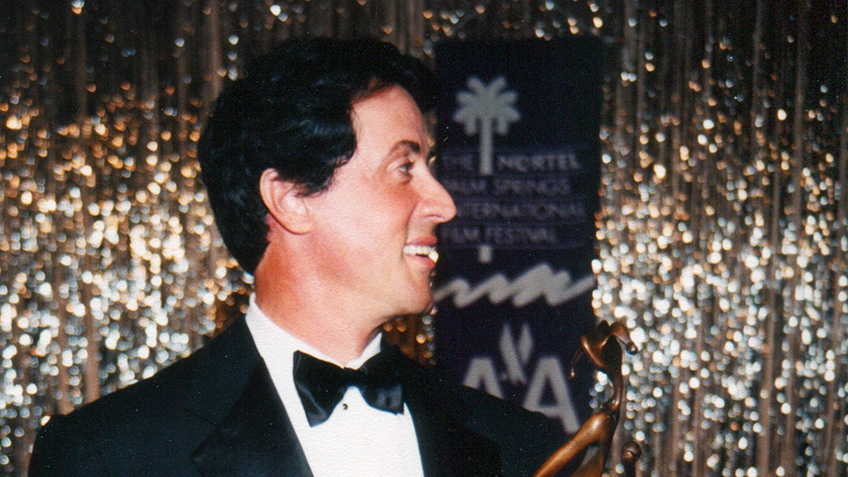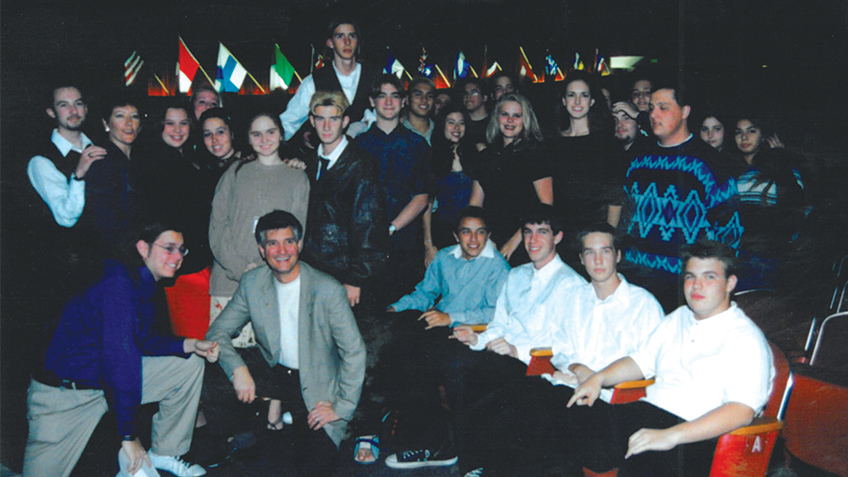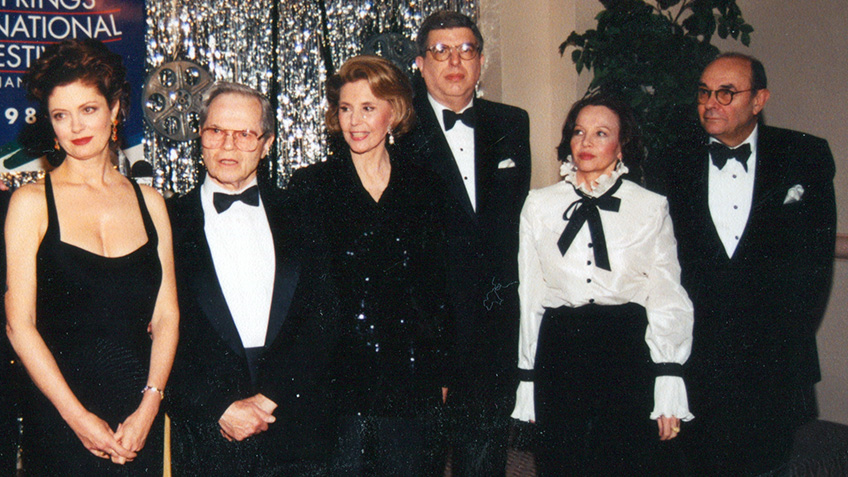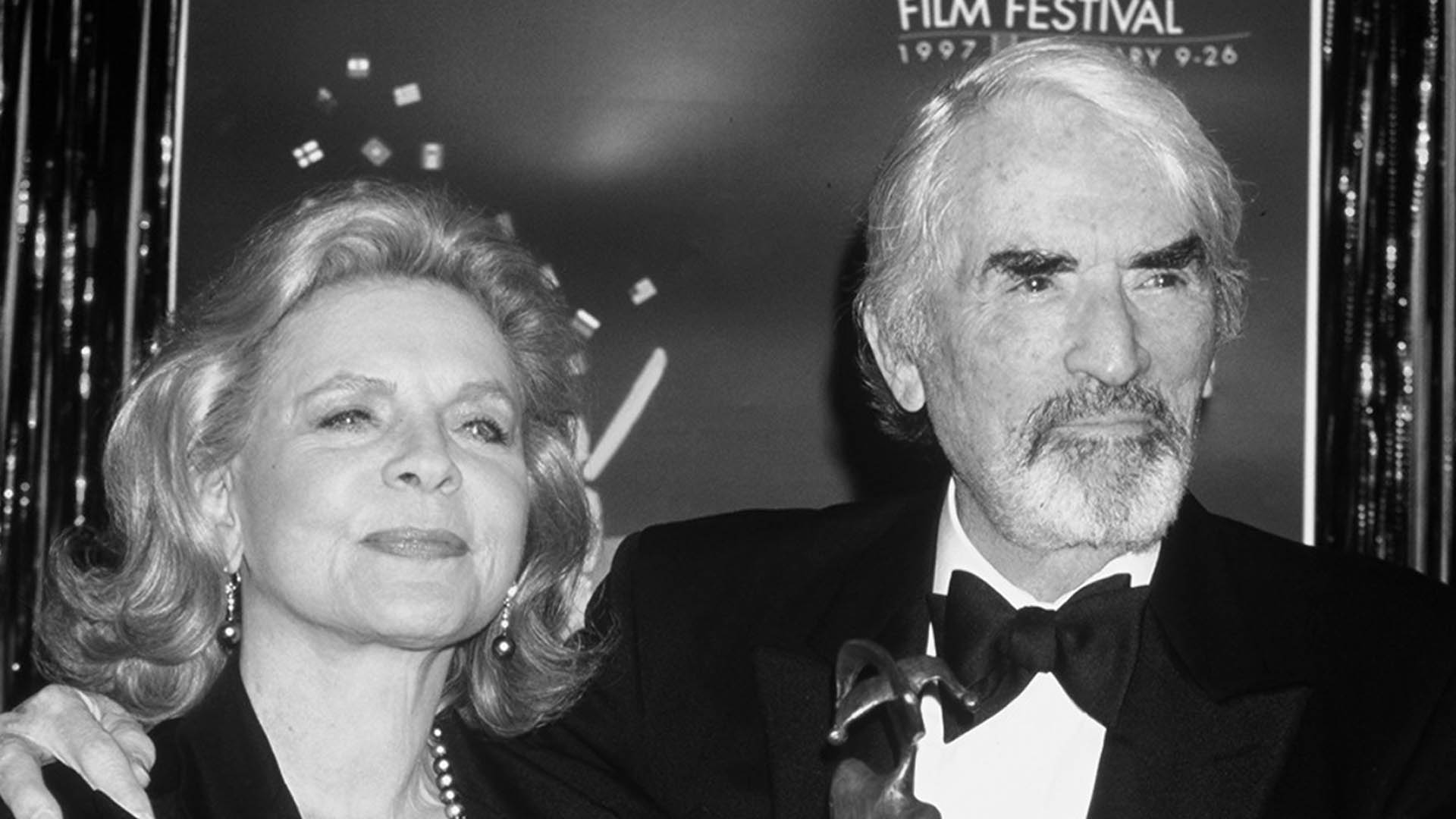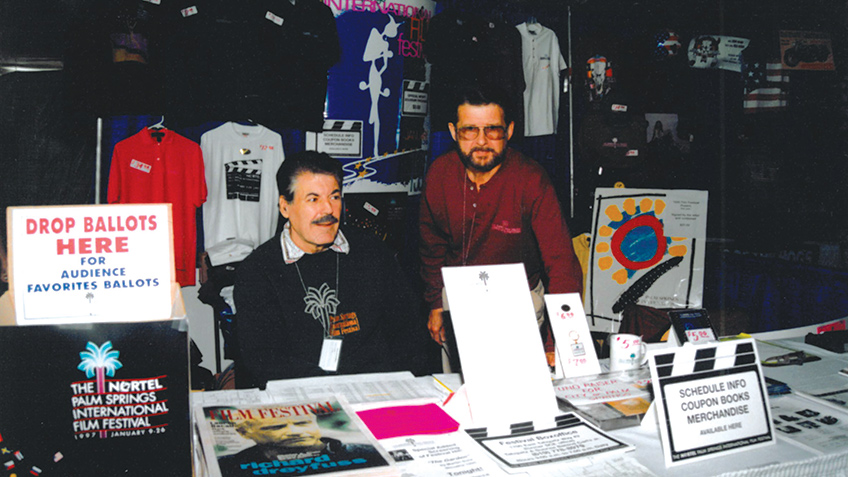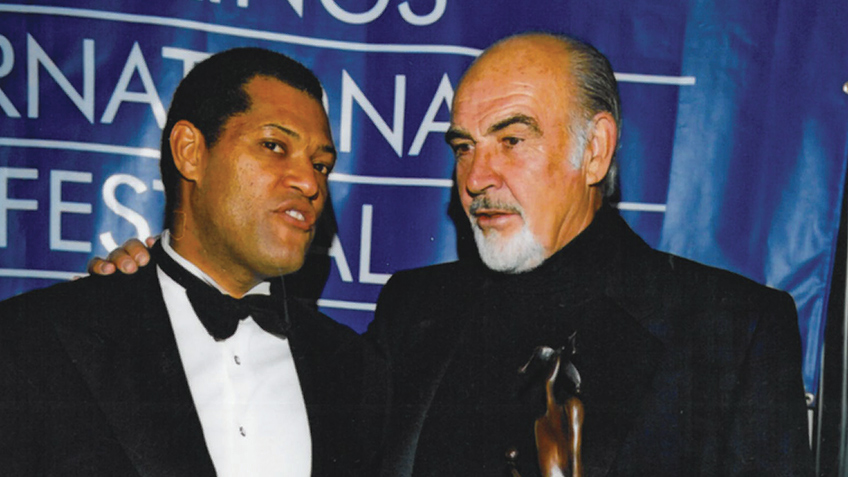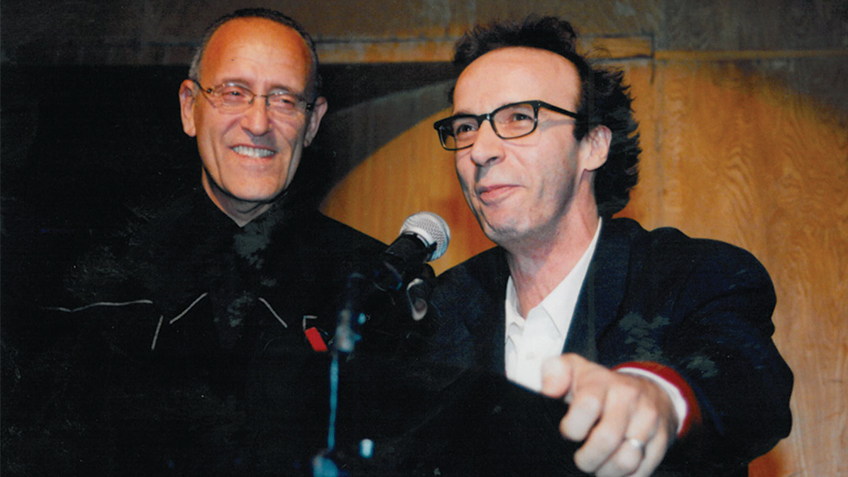About Us
History
International Film Festival
We haven't stopped since 1990.
The biggest driver of the Palm Springs International Film Festival's emergence was, of course, Sonny Bono, who, in the late 1980s felt that a film festival was exactly the kind of event that might extend the truncated tourist season in Palm Springs, and generate the kind of publicity that would help put Palm Springs on the map as a tourism destination year-round.
A Brief History
In 1989, he pulled a team together that could put into action the planning and logistical support that had been developed over the course of the previous year. Sonny then led the charge to bring major sponsors on board, including American Airlines, Metropolitan Theatres, and Wells Fargo Bank. He also brought a number of key members of the local community onto the Board in those early years for funding support and to help with the overall task, among them John Wessman, Steve Chase, Rozene Supple, Lois Schelcht, and Linda Shirvanian. For their part, Wessman and Shirvanian have remained major financial supporters of the event since its inception.
That first year's Festival, in January of 1990, was an immediate success, drawing more than 17,000 filmgoers in the course of its five-day run, and generating positive press coverage from publications including the Los Angeles Times, Variety, and The Hollywood Reporter.
In the second and third years of the Festival, the quality of the films, together with the presentation of major World and US Premieres by filmmakers like Steven Soderbergh, Luc Besson, Mike Newell, Dennis Potter, Gabriele Salvatores, Nick Roeg, John Duigan, Mark Joffe, Nick Broomfield, Michael Apted, Eric Rochant, Edward Yang, Pupi Avati, Bigas Luna, John Madden, Yves Robert, Vincent Ward, Paul Cox, Philip Haas, Vincent Ward, and many more, gave the Festival its well-deserved reputation for great programming and as a major emerging player in the Festival world. The quality of the programming attracted film industry participants, media coverage, film buyers, and great directors in droves.
The Festival launched a number of the films it premiered into hugely successful theatrical runs in North America, including Enchanted April, La Femme Nikita and Mediterraneo, which went on to win the Oscar for Best Foreign Language film in 1992 after premiering at Palm Springs.
Another major factor in the Festival's emergence was the one-two punch of having Jimmy Stewart in 1992, then Frank Sinatra and Marcello Mastroianni in 1993 attend the Festival to receive awards in back-to-back years. Having such world-renowned talents here in the third and fourth years of the Festival generated huge publicity outside of Palm Springs, and propelled the event forward with both the mainstream media and filmgoers from all across North America. Those were the years and the circumstances that created the event's emergence as a force in the Festival world.
By its fifth year, 1994, the Festival had grown to an audience of 42,000 attendees, filling hotel rooms and restaurants in town during its run (by then extended to 11 days), and drawing audiences and press coverage from across the country. The event commanded major respect from the film industry and filmmakers worldwide, and had drawn large numbers of new visitors to Palm Springs for the first time; many of them decided it was a great place to vacation regularly, and even to own a second home.
The following years saw increasing Board growth and organizational stability, along with the Festival finally getting a new three-screen theater, thanks to the generosity of Rozene Supple and her husband Ric, who built the Camelot Theatres with the Festival in mind.
In the late '90s, the Festival lost some of its mojo, as a plethora of other festivals emerged worldwide and gained prominence. Sundance was at the helm of the rise of the American Independent film movement, so in vogue at the time, and Toronto started courting the major studios, who used that Festival as a kind of road tryout, launching their films into the fall marketplace for 'serious' films, and a launchpad for end-of-year Oscar consideration. Foreign films struggled at the box office, unable to compete with the huge marketing budgets the studios laid out for their increased output, and independent theaters shuttered. The Festival itself maintained a faithful following, but the growth of the Festival audience lagged.
Then, early in the new century, Harold Matzner took the reins of the organization with a reinvigorated Board, adding new Board members and sponsors, and assembling a new management team to run the Festival with a clear artistic vision and a keen eye for the bottom line. He brought on Earl Greenburg, who, together with Jackie Lee Houston and a committed support team of Board members and Los Angeles allies, reinvigorated the Awards Gala, making it the star-studded powerhouse it has become. As stars like Kate Winslet, Brad Pitt, Naomi Watts, John Travolta, Nicole Kidman, Cate Blanchett, Daniel Day-Lewis, Charlize Theron, Jake Gyllenhaal, Liam Neeson, and Laura Linney began attending the Festival's Awards Gala to receive awards, the event was reborn, routinely generating more than one billion media impressions worldwide, and the awe of longtime Festival attendees.
Recognizing the Festival's potential impact on local business, the City of Palm Springs lent major support to the event in ways that hadn't been seen since the early days of Sonny Bono's leadership. The focus of the Festival returned to its original purpose, as envisioned by its founder: a hugely successful cultural event that attracted media attention, tourism, and filmgoers from all over the country-precisely the kind of collaboration between public and private interests that could provide huge benefits for all involved.
Now in its third decade, the Festival has come full circle, commanding huge media coverage annually, drawing major stars, attracting an attendance base that places it among the top three festivals in America, and boasting a film lineup widely respected for its breadth and scope. Clearly, the Palm Springs International Film Festival has come of age.
ShortFest & Film Market
We've been putting our shorts on for more than two decades!
A place to discover new talent and to be discovered, ShortFest is one of the largest, most successful and most prestigious short film events in North America. ShortFest's unique Film Market and Forums afford filmmakers ample opportunities to make their mark and share their stories.
A brief history
From the beginning ShortFest challenged conventional wisdom. Launched in 1995, ShortFest was conceived as a platform for emerging talent and a showcase for a format that had all but disappeared from theatrical exhibition.
An initial audience of just 2,400 paid $5 each to see 80 short films by unknown directors. But with the enthusiastic support of sponsors, media partners and the Hollywood community, ShortFest found its audience.
In 1996, more than 200 filmmakers were accredited, the first panels debuted and attendance doubled. What's more, the Academy of Motion Picture Arts and Sciences designated ShortFest an Oscar®-qualifying event: winners in juried categories would be eligible to submit their films to the Academy® for nomination consideration.
The famous ShortFest Forums - panels, master classes, roundtable discussions and special presentations - developed in response to the success of the first panels in '96 and are a key element of the Festival's ongoing appeal to emerging filmmakers.
Almost three decades later, ShortFest accepts over 5,500 filmmaker submissions and sees an exponential increase in attendance for both the film festival and Film Market each year. The official line-up regularly includes over 300 films selected from across the globe while an audience of more than 25,000 short film enthusiasts is now joined by hundreds of filmmakers and industry attendees.
Since its inception in 1996, ShortFest has proudly presented over 100 films that have gone on to receive Academy Award® nominations.

